Note
Requesting Nightcrawler with a mutant who prefers animals to people. They tolerate and later fall for Kurt because he treats everyone and everything around him with gentleness and genuine care.
A/N: thanks for requesting this! I think we can all agree Kurt is a huge lover of animals <3 Pairing: Kurt Wagner x gn!reader Tags: Introvert/extrovert friendship, developing feelings, mutual respect, empathy, animal communication, feeling like an outsider, found family
Kindred Spirits

The Danger Room hummed as it deactivated, the acrid tang of burnt wires filling the air. You sank against the deactivated training bot, massaging your temples. Another grueling session of hand-to-hand combat left you feeling drained. You weren't built for close-quarters fights. Your mutation, while interesting, wasn't exactly combat-oriented. You could converse with animals, understand their thoughts and emotions. A skill that, you often felt, was wasted in the X-Mansion's focus on battle.
A soft thud caught your attention. Nightcrawler perched on the bot beside you, his tail swishing gently. "Rough session?" he asked, his voice laced with concern that felt genuine, a rarity amongst the boisterous X-Men.
You shrugged, a low sigh escaping your lips. "It's not my forte." Truthfully, it wasn't just the fighting. You yearned for the quiet companionship of animals, a yearning your fellow X-Men didn't quite understand. They found solace in training, in the camaraderie of shared experiences. You craved the solitude of the woods, the gentle understanding of a curious deer or a wise old owl.
Nightcrawler tilted his head, his yellow eyes filled with empathy. "I understand," he said softly. "Sometimes, the chaos can be overwhelming. Even for someone who thrives on it."
You glanced at him, surprised. "You get it?"
"Of course," he chuckled, a sound like wind chimes. "Being different can sometimes make you feel like you don't belong. But that doesn't make you any less valuable."
His words struck a chord. You'd always felt like an outsider, more comfortable deciphering the chirps of sparrows than the banter of humans. Yet, there was Nightcrawler, a walking embodiment of "different," accepting you with open arms.
The following weeks saw an unexpected friendship blossom. You found yourself drawn to Nightcrawler's quiet gentleness. He wasn't just kind to people, but to everything around him. You watched him patiently soothe a scared kitty in a back alley, his voice a soothing murmur that calmed even the most agitated beast. He spoke to stray dogs on the city's streets, his words eliciting happy tail wags. You, the introvert, found yourself drawn out of your shell, enjoying the quiet conversations you shared with him, the gentle teasing tinged with a genuine respect that warmed your heart.
One afternoon at the park, you found him by the koi pond, his blue form a stark contrast to the vibrant fish. You approached hesitantly, your voice barely a whisper. "What are you doing?"
He looked up, a smile gracing his pointed features. "Just admiring the silence," he said, gesturing to the fish. "They have such a peaceful energy, don't they?"
You sat beside him, drawn to his peaceful aura. You confessed your introversion, your longing for the quiet companionship of animals. The words that usually felt awkward tumbled out easily, unburdened by judgment.
He listened intently, his expression filled with understanding. "Many find strength in crowds," he said softly, "but there's nothing wrong with finding solace in solitude. It's a different kind of strength, but strength nonetheless." He met your gaze with his warm yellow eyes. "And your ability to connect with animals," he continued, "that's a gift, Mein Freund. It shows a depth of empathy most people can only dream of."
His words filled you with a newfound sense of confidence. For the first time, you saw your introversion not as a weakness, but as a strength. And your connection with animals, a skill often scoffed at by others, was a gift.
As the sun dipped below the horizon, casting long shadows across the pond, you leaned your head against his shoulder, a silent gesture of gratitude. He didn't need words. His smile, warm and genuine, spoke volumes. In that quiet moment, you realized you weren't alone. You had found a kindred spirit, someone who understood your need for solitude, someone who saw the beauty in your differences, someone who, just like you, possessed a heart that resonated with the quiet whispers of the natural world.
A wistful look crossed Nightcrawler's face as he spoke of his past. "Back at the circus," he said softly, "I used to spend hours with the animals. They never judged me for my appearance. We understood each other in a way most humans couldn't."
You reached out, placing a hand on his arm. A silent understanding passed between you, a shared love for creatures who offered companionship without judgment. In that quiet moment, you realized you weren't alone. Not anymore.
161 notes
·
View notes
Text
Valor Unbound: The Legacy of the 54th Massachusetts Infantry Regiment

Happy Black History Month!
This week, we are highlighting the honor and bravery of the 54th Massachusetts Infantry Regiment, one of the first African American units in the Civil War. Established in 1863, following the Emancipation Proclamation, the formation of the regiment marked a pivotal moment in military history, challenging racial barriers and setting a precedent for the inclusion of African Americans in the United States military.
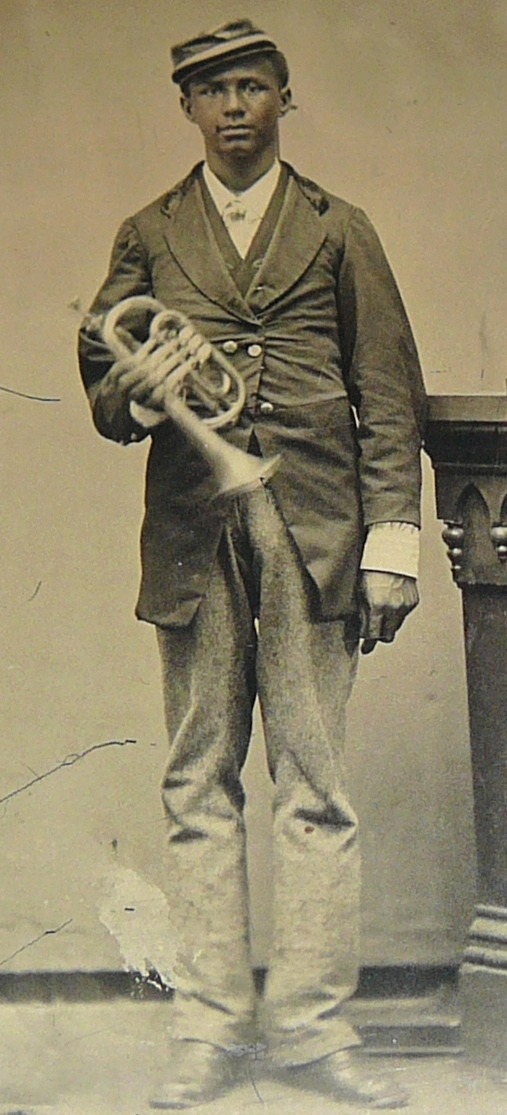

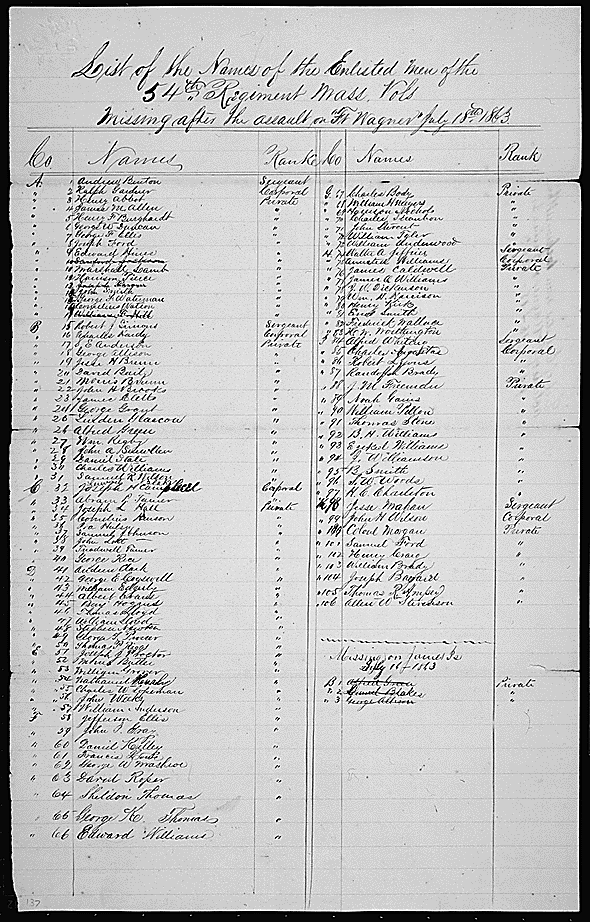
Under the leadership of Colonel Robert Gould Shaw, the 54th Massachusetts consisted of free African American men and escaped slaves eager to fight for the Union and the freedom of their fellow Americans. Their most notable engagement, at Fort Wagner, South Carolina, showcased their courage and determination. Though the battle was fierce and the regiment suffered heavy casualties, their sacrifice significantly bolstered the Union’s morale and support for African American soldiers.

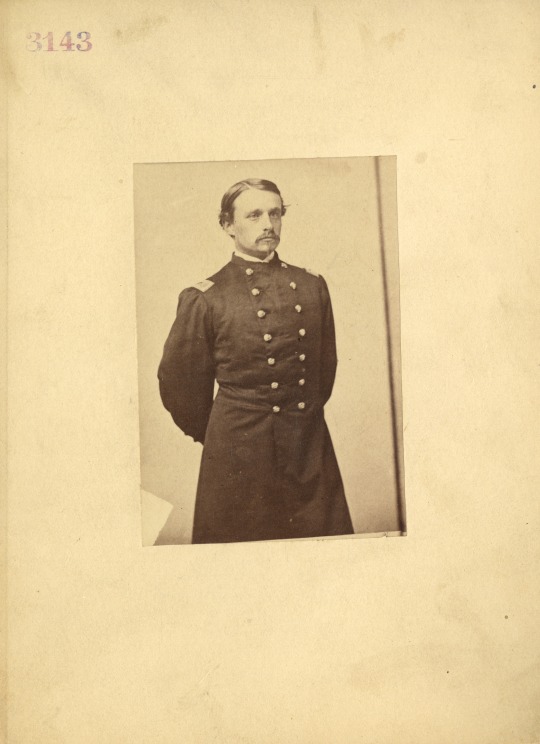
The legacy of the 54th Massachusetts Infantry Regiment extends beyond their military achievements. By demonstrating the valor and capability of African American soldiers, they helped change public opinion and policies, leading to the enlistment of nearly 200,000 African American men in the Union forces by the war’s end.
Additional resources:
https://www.archives.gov/exhibits/american_originals/54thmass.html
https://prologue.blogs.archives.gov/2018/02/01/black-history-month-the-54th-massachusetts/
https://www.archives.gov/education/lessons/blacks-civil-war/compiled-service-records.html
https://www.archives.gov/education/lessons/blacks-civil-war/douglass-sons.html
https://prologue.blogs.archives.gov/2021/07/09/facial-hair-friday-robert-gould-shaw/
https://docsteach.org/documents/document/casualty-list-54th-massachusetts-assault-on-fort-wagner
https://www.archives.gov/research/african-americans
#Black History Month#African American History#Veterans#Military History#National Archives#54th Massachusetts Infantry
113 notes
·
View notes
Text

Sergeant Major Lewis Henry Douglass (October 9th, 1840 - September 19, 1908) was the eldest son of Frederick Douglass and his wife Anna Murray-Douglass in New Bedford, Massachusetts. He spent his youth working with his father as a typesetter at his father’s two newspapers, The North Star and the Douglass’ Weekly. When the call went out for recruits for the 54th Massachusetts, he and his brother Charles, enlisted in the 54th. Colonel Shaw, upon accepting Lewis into the 5th, promoted him to Sergeant Major, the highest rank an African American man could hold at that time. He was a part of the battle at Fort Wagner. He was discharged from the Army for medical reasons on May 10th, 1864. He moved with his family from New Bedford to DC in 1867. He married Helen Amelia Loguen (1869) and for a while worked at the Freedman’s Bureau. He continued to work in the printing industry, becoming the first African American typesetter employed by the Government Printing Office. When the typesetters union refused him membership because of his race, he fought relentlessly until they allowed African American membership. He turned his eye back to his father’s field and established The National Era, a weekly paper aimed at DC’s African American population. He and his wife had no children. #africanhistory365 #africanexcellence
2 notes
·
View notes
Text
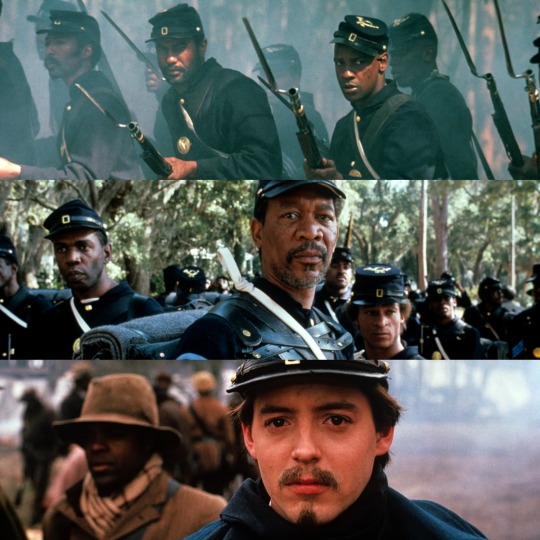
Glory (1989, Edward Zwick)
24/01/2024
Glory is a 1989 film directed by Edward Zwick about the first volunteer fighter unit formed by African Americans in the United Army during the American Civil War.
The film is inspired by the personal letters of Colonel Robert Gould Shaw, who led the 54th Massachusetts Volunteer Infantry Regiment from its formation in February 1863 until the attack on Fort Wagner in South Carolina, where he died during the assault in July of the same year.
Among the awards received, the film received five nominations for the 1990 Oscars, winning three as best supporting actor for Denzel Washington, best cinematography and best sound.
On September 17, 1862, during the American Civil War, Captain Robert Gould Shaw was slightly wounded during the Battle of Antietam and returned home to Boston on medical leave. During a ceremony in November of the same year, he met the abolitionist Frederick Douglass and at the request of Governor John Andrew, accepted the task of training and commanding with the rank of colonel the first regiment of African-American men of the Union Army.
The men are informed that due to President Lincoln's Emancipation Proclamation, the Confederacy has declared that all captured black Union soldiers will be returned to slavery and the white officers under their command shot.
In the subsequent clashes, the regiment gained the valor and respect of the white soldier and Shaw proposed himself to General George Strong as the first attack force on Fort Wagner, as part of the campaign to secure the port city of Charleston.
The officers are aware that breaking the fort's defenses will not be easy; in fact the fortress had previously been attack by a white regiment but without success (First Battle of Fort Wagner). A front-line force of the 54th, with supporting white companies, begins the Second Battle of Fort Wagner.
The film budget was $18 million and filming took place in Georgia and Massachusetts from February 9 to April 27, 1989.
Rotten Tomatoes indicates that 93% of 40 selected critics gave the film a positive review, with an average score of 7.9 out of 10.
#glory#film#1989#edward zwick#union#american civil war#Robert Gould Shaw#1863#south carolina#62nd Academy Awards#denzel washington#1862#Captain#Battle of Antietam#Boston#frederick douglass#John Albion Andrew#Military rank#Colonel#union army#emancipation proclamation#abraham lincoln#confederate states of america#George Strong#charleston south carolina#First Battle of Fort Wagner#Second Battle of Fort Wagner#georgia#massachusetts#rotten tomatoes
6 notes
·
View notes
Text
Events 7.18 (before 1950)
477 BC – Battle of the Cremera as part of the Roman–Etruscan Wars. Veii ambushes and defeats the Roman army. 387 BC – Roman-Gaulish Wars: Battle of the Allia: A Roman army is defeated by raiding Gauls, leading to the subsequent sacking of Rome. 362 – Roman–Persian Wars: Emperor Julian arrives at Antioch with a Roman expeditionary force (60,000 men) and stays there for nine months to launch a campaign against the Persian Empire. 452 – Sack of Aquileia: After an earlier defeat on the Catalaunian Plains, Attila lays siege to the metropolis of Aquileia and eventually destroys it. 645 – Chinese forces under general Li Shiji besiege the strategic fortress city of Anshi (Liaoning) during the Goguryeo–Tang War. 1195 – Battle of Alarcos: Almohad forces defeat the Castilian army of Alfonso VIII and force its retreat to Toledo. 1290 – King Edward I of England issues the Edict of Expulsion, banishing all Jews (numbering about 16,000) from England. 1334 – The bishop of Florence blesses the first foundation stone for the new campanile (bell tower) of the Florence Cathedral, designed by the artist Giotto di Bondone. 1389 – France and England agree to the Truce of Leulinghem, inaugurating a 13-year peace, the longest period of sustained peace during the Hundred Years' War. 1507 – In Brussels, Prince Charles I is crowned Duke of Burgundy and Count of Flanders, a year after inheriting the title. 1555 – The College of Arms is reincorporated by Royal charter signed by Queen Mary I of England and King Philip II of Spain. 1723 – Johann Sebastian Bach leads the first performance of his cantata Erforsche mich, Gott, und erfahre mein Herz, BWV 136, in Leipzig on the eighth Sunday after Trinity. 1806 – A gunpowder magazine explosion in Birgu, Malta, kills around 200 people. 1812 – The Treaties of Orebro end both the Anglo-Russian and Anglo-Swedish Wars. 1841 – Coronation of Emperor Pedro II of Brazil. 1857 – Louis Faidherbe, French governor of Senegal, arrives to relieve French forces at Kayes, effectively ending El Hajj Umar Tall's war against the French. 1862 – First ascent of Dent Blanche, one of the highest summits in the Alps. 1863 – American Civil War: Second Battle of Fort Wagner: One of the first formal African American military units, the 54th Massachusetts Volunteer Infantry, supported by several white regiments, attempts an unsuccessful assault on Confederate-held Battery Wagner. 1870 – The First Vatican Council decrees the dogma of papal infallibility. 1872 – The Ballot Act 1872 in the United Kingdom introduced the requirement that parliamentary and local government elections be held by secret ballot. 1914 – The U.S. Congress forms the Aviation Section, U.S. Signal Corps, giving official status to aircraft within the U.S. Army for the first time. 1925 – Adolf Hitler publishes Mein Kampf. 1942 – World War II: During the Beisfjord massacre in Norway, 15 Norwegian paramilitary guards help members of the SS to kill 288 political prisoners from Yugoslavia. 1942 – The Germans test fly the Messerschmitt Me 262 using its jet engines for the first time. 1944 – World War II: Hideki Tōjō resigns as Prime Minister of Japan because of numerous setbacks in the war effort.
1 note
·
View note
Text

Glory Is One Of The Finest Civil War Films Ever Made
Matthew Broderick, Denzel Washington, and Morgan Freeman starred in 1989's Glory, about the Union Army's first African American regiment during the Civil War. The film was partially based on the personal letters of Colonel Robert Gould Shaw (Broderick) during the Second Battle of Fort Wagner.
The film earned a 93 percent rating on Rotten Tomatoes, with critics saying, "Bolstered by exceptional cinematography, powerful storytelling, and an Oscar-winning performance by Denzel Washington, Glory remains one of the finest Civil War movies ever made." American Civil War historian James M. McPherson believes it's one of the most accurate Civil War on-screen depictions.
youtube
2 notes
·
View notes
Photo

UNIT PROFILE – 54TH MASSACHUSETTS VOLUNTEER INFANTRY REGIMENT The Emancipation Proclamation’s promulgation in 1863 opened the Union Army’s ranks to Black soldiers for the first time, allowing Black Americans to fight for the Union’s preservation and the end of slavery. The 54th Massachusetts Volunteer Infantry Regiment was among the first all-Black units to be stood up. Led by COL Robert Gould Shaw (scion of a prominent abolitionist family) and promoted by prominent figures like Frederick Douglass, the 54th was flooded with recruits. Despite Confederate promises to punish captured Black soldiers and their white officers with summary execution for promoting “servile insurrection,” the 54th marched to war in high spirits, leaving Boston on 28 MAY. From 18 – 19 JUL the Union began operations to capture Fort Wagner (a critical part of the harbor defenses of Charleston, South Carolina) following an early unsuccessful attack from 10 – 11 JUL. Deploying a force of 5,000 infantry in a frontal assault, the Union placed the 54th in the vanguard of the attack force, sending them charging across an open field towards Ft. Wagner under withering rifle and artillery fire rained on them by the 1,800 Confederate defenders. COL Shaw led the 54th up the fortifications, rallying his men with a cry of “Forward Fifty-Fourth!” from atop the ramparts before being killed. Despite their commander’s death the 54th pushed on, engaging the rebels in bitter hand-to-hand fighting. Despite 54th’s best efforts, the Union was unable to break through the fort’s defenses; the 54th paid an exorbitant price for its extraordinary valor, suffering a staggering 42% casualty rate (280 of the 600 of its men who fought in the Second Battle of Ft. Wagner). The stories of the 54th’s heroism quickly spread across the Union, motivating Black Americans to enlist in the U.S. Army. Between 1863 and 1865 nearly 200,000 Black soldiers served the cause of liberty, contributing roughly 10% of the U.S. Army’s Civil War manpower. #Armyhistory #USArmy #TRADOC #CivilWar #CivilWarHistory #ArmyHeritage #MilitaryHistory #BlackHistoryMonth #54thmassachusetts Posted @withregram • @armyhistory (at Army Recruiting Columbia, TN) https://www.instagram.com/p/CocK6HVutK2/?igshid=NGJjMDIxMWI=
#armyhistory#usarmy#tradoc#civilwar#civilwarhistory#armyheritage#militaryhistory#blackhistorymonth#54thmassachusetts
1 note
·
View note
Text
Olustee is yet another forgotten battle with a grim side to it:
Unlike Miliken's Bend or Battery Wagner Olustee was not connected to some bigger campaign, it *was* the campaign. A poorly conceived effort to establish a US bridgehead in Florida mounted without an understanding of the forces faced, what it would cost to do it, and in reality leading to a cheap victory for the local Confederate forces....and the first of many massacres through 1864 of Black soldiers who were butchered in cold blood on the field. Fort Pillow is the most notorious massacre, not the largest, and very far from alone.
#lightdancer comments on history#black history month#us history#military history#olustee campaign#united states colored troops
0 notes
Text
~ Alfred Terry ~
We have a belated #harbordefensehappybirthday to celebrate!today, we honor U.S. Army Major General Alfred Howe Terry, born (Sat) November 10th, 1827 in Hartford, CT. He graduated from Yale Law in 1848, and became a clerk for the New Haven County Superior Court.
With the outbreak of the Civil War, Terry raised his own Regiment, the 2nd Connecticut Volunteer Infantry. They were immediately engaged at First Bull Run. He then raised a new unit, the 7th CT Volunteer Infantry. They went to South Carolina, fighting around Charleston where they captured Fort Wagner in September 1863, before proceeding to Virginia through 1864, where they fought at Petersburg.
Terry led his men into the teeth of the Confederate defenses at Fort Fisher, NC in January, 1865, then drove on Wilmington. Following the end of the war, he helped broker a treaty with the Indians in Wyoming in 1868 before serving as Military Governor in Atlanta. Returning to The West, his men were first on the scene after Custer’s massacre at Little Big Horn in 1876. He negotiated with Sitting Bull, and fought in the Nez Perce War in 1877.
His final command was the Military Division Of The Missouri, from which he retired in 1888. Sadly, he passed away just two years later on December 16th, 1890, aged 63. He was buried in New Haven.
However, his legacy of service would not be allowed to end there. With War Department General Order No. 134 on July 22nd, 1899, he became the namesake to Fort Terry on Plum Island at the entrance of Long Island Sound. It would form part of the defensive chain in conjunction with adjacent Forts Michie and H.G. Wright. Fort Terry would be armed to the teeth, with no less than 13 gun batteries between 1897 and 1946.
Today, the Fort exists in a bizarre limbo. Rather than public sale or transition to a park, Fort Terry and Plum Island were transferred to the Department of Agriculture, and since 1954, has been home to the Plum Island Animal Disease Center. Here, top secret testing on the threats and countermeasures to livestock is undertaken. The island is heavy guarded by the Department of Homeland Security. Many of the Fort buildings and nearly all the batteries sit in quiet isolation, neglected, but preserved from vandalism.
Not to brag or anything, but I am one of the very few people who can say they have been to Fort Terry. That was the ��add-on” trip to the 2011 Coast Defense Study Group Conference in Narragansett Bay & New Bedford. We had to undergo a background check, a pat-down, and hawk-like security while we were there (not even allowed to go INTO the Batteries) but boy, was it worth it.
As of late 2023, there are talks of moving the Disease Lab to the mid-west, and preserving the island as a natural resource site, as opposed to private sale – and development. Our fingers are crossed, and we will keep you posted if we learn anything.
Today, we remember and honor Major General Terry’s incredible service. Hopefully, one day, all of us will be able to travel freely to Plum Island to enjoy it as a natural and cultural resource. In the meantime, however, General Terry’s legacy, that of the Fort that carries his name, and most importantly, the Soldiers who manned it, is in safe hands, here.
🇺🇸 🇺🇸 🇺🇸 🇺🇸 🇺🇸
🇺🇲🇺🇲 ** Please Like & Follow "Sandy Hook History" on Facebook & Instagram for more amazing maritime and military histories of the Garden State and New York Harbor as well as a review of the 80th Anniversary of the Battle Of The Atlantic and World War 2** 🇺🇲🇺🇲
#visitmonmouth #newjerseybuzz #thejournalnj #locallivingnj #journeythroughjersey #centraljerseyexists #discovernj #yesnj #newjerseyhistory #newjerseyforyou #sandyhookbeach #sandyhooknj #sandyhookhistory #forthancockhistory #forthancock #alfredterry #fortterry #plumisland #coastartillery #newyorkhistory #longislandsound #americancivilwar #fortfisher #sittingbull #majorgeneral #departmentofagriculture #homelandsecurity #blockislandsound #indianwars
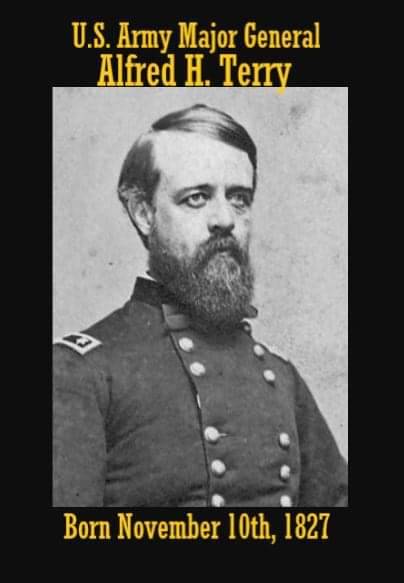
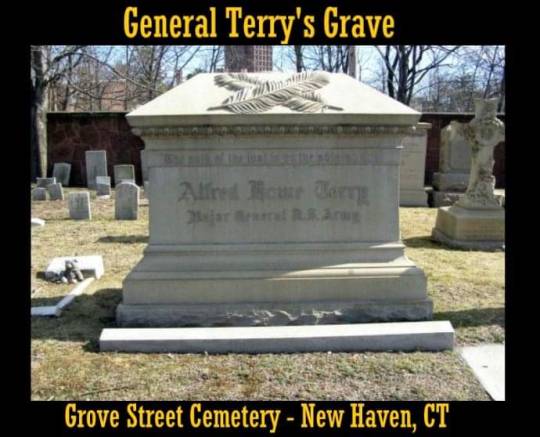
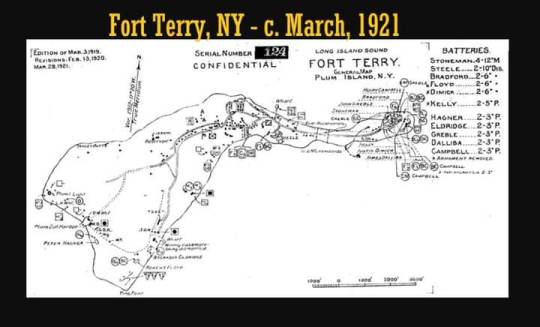



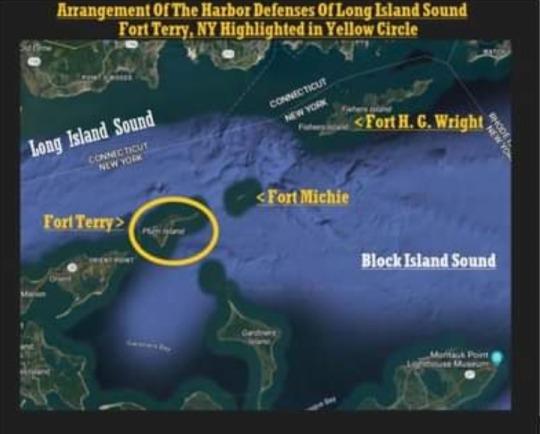

1 note
·
View note
Text
History
July 19-20, 1848 - A women's rights convention was held at Seneca Falls, New York. Topics discussed included voting rights, property rights and divorce. The convention marked the beginning of an organized women's rights movement in the U.S.
July 19, 1863 - During the American Civil War, Union troops made a second attempt to capture Fort Wagner near Charleston, South Carolina. The attack was led by the 54th Massachusetts Colored Infantry, commanded by Colonel Robert Gould Shaw, who was killed along with half of the 600 men in the regiment. This battle marked the first use of black Union troops in the war.
Birthday - French impressionist painter Edgar Degas (1834-1917) was born in Paris. Best known for his paintings of dancers in motion.
0 notes
Photo
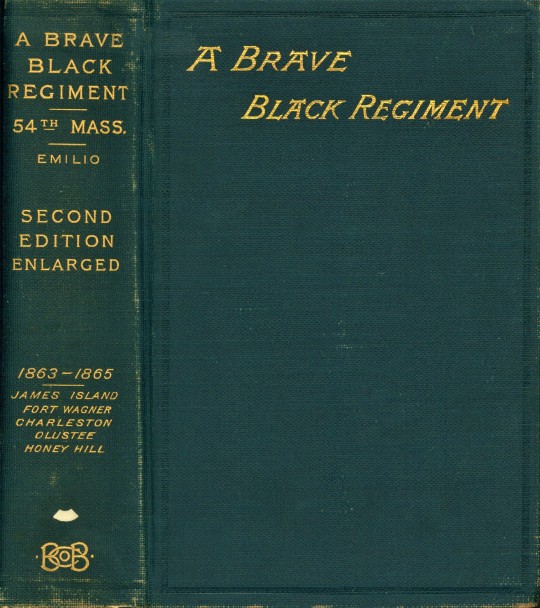





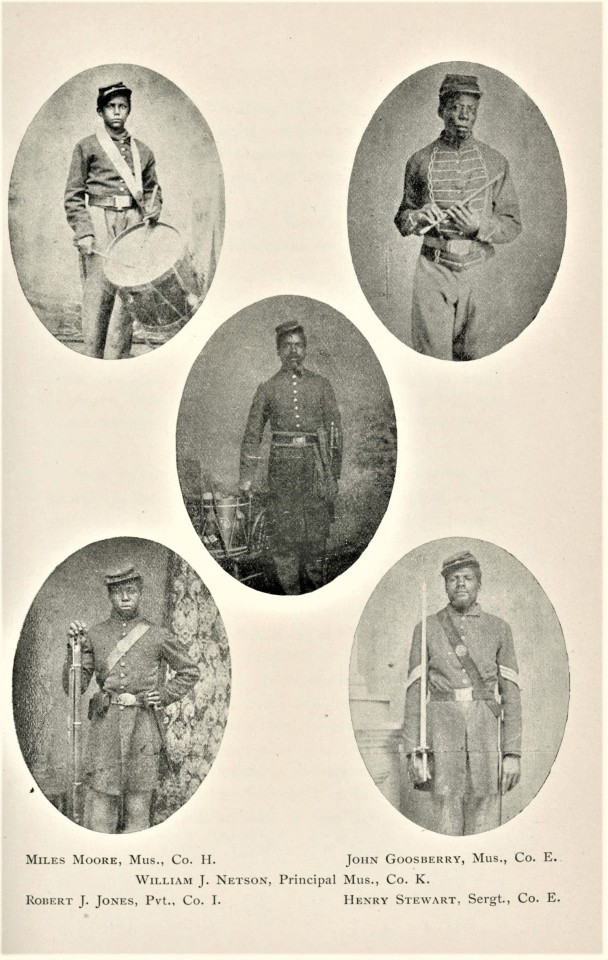


Milestone Monday
54th Massachusetts Infantry Regiment
On this day, July 18 in 1863, one of the first formal African American military units, the 54th Massachusetts Volunteer Infantry, supported by several white regiments, attempted an unsuccessful assault on Confederate-held Battery Wagner in what is known as the Second Battle of Fort Wagner. Despite the Confederate victory, the valor of the Black Union soldiers in the battle was hailed, strategically encouraging more African-Americans to enlist in Union regiments.
The 54th Massachusetts and this battle were most popularly memorialized by the 1989 Academy Award-winning film Glory, starring Matthew Broderick as the regiment’s white commander Colonel Robert G. Shaw (pictured above), and Denzel Washington, Morgan Freeman, Jihmi Kennedy, and Andre Braugher as members of the Black troops. A well-known monument by Augustus Saint-Gaudens on the Boston Common also memorializes Shaw and his regiment, and is part of the Boston Black Heritage Trail.
Curiously, Medal of Honor awardee Sergeant William Harvey Carney (also pictured above) is not depicted as a character in the movie Glory. During the Battle of Fort Wagner, Carney grabbed the U.S. flag as the flag bearer fell and rallied the troops by carrying the flag to the enemy ramparts and back, crying "Boys, the old flag never touched the ground!" The battle cry would later be turned into a song in Carney’s honor in 1900. This heroic action became the first for which the Medal of Honor was awarded to an African American.
In commemoration of this milestone, we present the second revised and corrected edition of History of the Fifty-Fourth Regiment of Massachusetts Volunteer Infantry, 1863-1865 by Captain Luis F. Emilio of the 54th, published in Boston by the Boston Book Company in 1894.
View more Milestone Monday posts.
#Milestone Monday#milestones#54th Massachusetts Volunteer Infantry#Civil War#American Civil War#African American troops#Black troops#regimental history#Second Battle of Fort Wagner#Robert G. Shaw#William Harvey Carney#Luis F. Emilio#African American History#History of the Fifty-Fourth Regiment of Massachusetts Volunteer Infantry
41 notes
·
View notes
Text
I always love the reply of Frank Shaw, the father of Robert Gould Shaw, colonel of the 54th Massachusetts regiment, the first black regiment in the US army, after he was told that his son was killed at the second battle of Fort Wagner and was buried with his soldiers in what the Confederates thought was an insult:

We would not have his body removed from where it lies surrounded by his brave and devoted soldiers. ... We can imagine no holier place than that in which he lies, among his brave and devoted followers, nor wish for him better company. – what a body-guard he has!
33 notes
·
View notes
Text
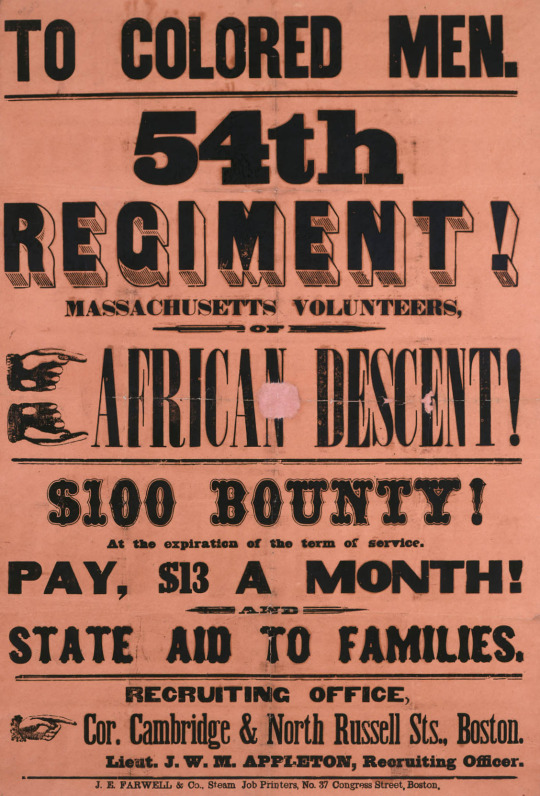
The Fifty-fourth Massachusetts Infantry Regiment was the first Northern Black volunteer regiment enlisted to fight in the Civil War. Its accomplished combat record led to the general recruitment of African Americans as soldiers. They comprised ten percent of the Union Army and Navy. The Fifty-fourth’s successful campaign for equal pay signaled a move toward racial justice in the military.
President Abraham Lincoln agreed to enroll African Americans in the Union Army. Massachusetts’ abolitionist governor received the War Department’s consent to form a regiment of free Northern Blacks. Prominent abolitionist Robert Gould Shaw accepted the position of colonel of the Fifty-fourth. 1,007 black men had enlisted in the Fifty-fourth.
Individual states recruited and trained local Civil War regiments which joined the Federal forces. Only 113 men (13 percent) hailed from Massachusetts. The new regiment represented a broad geographical spectrum, including soldiers from 15 northern states, four border states, five Confederate states, Canada, and the West Indies. At least 30 were formerly enslaved. 1,007 Black infantrymen and 37 white officers served in the regiment. African Americans were not permitted to serve as officers, all the sergeants and corporals were Black.
After an emotional march on Boston Common on May 28, 1863, the Fifty-fourth sailed south. Fort Wagner was the Fifty-fourth’s most costly and famed battle. At least 74 enlisted men and 3 officers, including Shaw, died in combat, and it was celebrated within the Union as a heroic defeat. Following Wagner, the Fifty-fourth fought in the Battle of Olustee, the Battle of Honey Hill, and the Battle of Boykin’s Mill.
The regiment’s survivors were discharged on September 1, 1865, and the Black community of Boston sought to erect a memorial to the Fifty-fourth.
The film Glory was based on the history of the Fifty-fourth and the Fort Wagner attack. #africanhistory365 #africanexcellence
1 note
·
View note
Photo


William Harvey Carney was born in Norfolk City on February 29, 1840 to William and Nancy Ann Carney. His parents were enslaved, though freedom was promised by their owners. Carney grew up a slave. He was secretly taught to read and write by a local minister at the age of 14. Two years later, Carney was working with his father.
William Carney, Sgt. Carney’s father, escaped enslavement after the death of his owner, Mrs. Sarah Ann Twine, in 1857. While traveling north, Carney met William Still in Philadelphia where his life experience was recorded. He continued his travels to New York before settling permanently in New Bedford, Massachusetts. Once there, William Carney worked tirelessly to free his family. His efforts paid off when Sgt. Carney and five other siblings joined their father in New Bedford soon afterward. In 1859, William Carney raised enough money to purchase freedom for his wife Nancy, Sgt. Carney’s mother, from Joseph Carter of Norfolk County, Virginia.
Sgt. Carney worked odd jobs around New Bedford and considered entering the ministry when he heard the call “for all people” to serve their country. Believing he could best serve God by helping to free his oppressed brothers, Carney joined the 54th Massachusetts Volunteer Colored Infantry in February 1863.
Carney entered the regiment as a private but was quickly promoted to sergeant on March 30, 1863. The regiment took part in the July 18, 1863 assault on Fort Wagner, South Carolina. He saved his regiment’s American flag during the battle. Seeing the regimental flag bearer had fallen, Carney took up the flag and planted it on the Confederate parapet during the attack. He, already wounded, continued to hold the American flag while the Confederate troops charged. Recognizing the Federal troops had to retreat under fire, Carney struggled back across the battlefield, and returned the flag to the Union lines while being wounded twice more. Sgt. Carney said modestly, "Boys, I only did my duty. The old flag never touched the ground."
Sgt. Carney received the Quincy A. Gillmore Medal of Gallant and Meritorious Award during the war. Years later, Christian Fleetwood approached Carney about using his Medal of Honor for the 1900 Paris Exhibition featuring Civil War African American action. After learning that Carney had not received the Medal of Honor, Christian Fleetwood and Luis Fenollosa Emilio petitioned the War Department to award Carney the Medal of Honor. On May 9, 1900, the War Department bestowed the Medal of Honor on Carney for his gallant service at Fort Wagner during the Civil War. His actions during the battle was the first known action by an African American serviceman that led to a Medal of Honor.
Carney returned to New Bedford after the war. He married Susannah Williams on October 11, 1865 in New Bedford and had one daughter, Clara Heronia. Carney became the first black postal mail carrier for New Bedford in 1869, and the first known black mail carrier for the United States Postal Service. He retired after more than 30 years of service. Carney died in Boston on December 9, 1908 from injuries sustained from an elevator accident at the Massachusetts State House where he was working as a messenger, in the office of the Secretary of State. He is buried in Oak Grove Cemetery in New Bedford, Massachusetts.
#william h carney#american civil war#us civil war#us history#54th Massachusetts#acw#history#and if i remember correctly...denzel's character in glory is kindaaa based off of carney#not 100% which is one of the bummer about 'glory' as much as i loved it#so many of the men in this regiment had such interesting stories and lives#and they didn't use any of these really people
12 notes
·
View notes
Text
Events 9.7 (before 1930)
70 – A Roman army under Titus occupies and plunders Jerusalem. 878 – Louis the Stammerer is crowned as king of West Francia by Pope John VIII. 1159 – Pope Alexander III is chosen. 1191 – Third Crusade: Battle of Arsuf: Richard I of England defeats Saladin at Arsuf. 1228 – Holy Roman Emperor Frederick II lands in Acre, Israel, and starts the Sixth Crusade, which results in a peaceful restoration of the Kingdom of Jerusalem. 1303 – Guillaume de Nogaret takes Pope Boniface VIII prisoner on behalf of Philip IV of France. 1571 – Thomas Howard, 4th Duke of Norfolk, is arrested for his role in the Ridolfi plot to assassinate Queen Elizabeth I of England and replace her with Mary, Queen of Scots. 1620 – The town of Kokkola (Swedish: Karleby) is founded by King Gustavus Adolphus of Sweden. 1630 – The city of Boston, Massachusetts, is founded in North America. 1652 – Around 15,000 Han farmers and militia rebel against Dutch rule on Taiwan. 1695 – Henry Every perpetrates one of the most profitable pirate raids in history with the capture of the Grand Mughal ship Ganj-i-Sawai. In response, Emperor Aurangzeb threatens to end all English trading in India. 1706 – War of the Spanish Succession: Siege of Turin ends, leading to the withdrawal of French forces from North Italy. 1764 – Election of Stanisław August Poniatowski as the last ruler of the Polish–Lithuanian Commonwealth. 1776 – According to American colonial reports, Ezra Lee makes the world's first submarine attack in the Turtle, attempting to attach a time bomb to the hull of HMS Eagle in New York Harbor (no British records of this attack exist). 1812 – French invasion of Russia: The Battle of Borodino, the bloodiest battle of the Napoleonic Wars, is fought near Moscow and results in a French victory. 1818 – Carl III of Sweden–Norway is crowned king of Norway, in Trondheim. 1822 – Dom Pedro I declares Brazil independent from Portugal on the shores of the Ipiranga Brook in São Paulo. 1856 – The Saimaa Canal is inaugurated. 1857 – Mountain Meadows massacre: Mormon settlers slaughter most members of peaceful, emigrant wagon train. 1860 – Unification of Italy: Giuseppe Garibaldi enters Naples. 1863 – American Civil War: Union troops under Quincy A. Gillmore capture Fort Wagner in Morris Island after a seven-week siege. 1864 – American Civil War: Atlanta is evacuated on orders of Union General William Tecumseh Sherman. 1901 – The Boxer Rebellion in Qing dynasty (modern-day China) officially ends with the signing of the Boxer Protocol. 1903 – The Ottoman Empire launches a counter-offensive against the Strandzha Commune, which dissolves. 1906 – Alberto Santos-Dumont flies his 14-bis aircraft at Bagatelle, France successfully for the first time. 1907 – Cunard Line's RMS Lusitania sets sail on her maiden voyage from Liverpool, England, to New York City. 1909 – Eugène Lefebvre crashes a new French-built Wright biplane during a test flight at Juvisy, south of Paris, becoming the first aviator in the world to lose his life piloting a powered heavier-than-air craft. 1911 – French poet Guillaume Apollinaire is arrested and put in jail on suspicion of stealing the Mona Lisa from the Louvre museum. 1916 – US federal employees win the right to Workers' compensation by Federal Employers Liability Act (39 Stat. 742; 5 U.S.C. 751) 1920 – Two newly purchased Savoia flying boats crash in the Swiss Alps en route to Finland where they were to serve with the Finnish Air Force, killing both crews. 1921 – In Atlantic City, New Jersey, the first Miss America Pageant, a two-day event, is held. 1921 – The Legion of Mary, the largest apostolic organization of lay people in the Catholic Church, is founded in Dublin, Ireland. 1923 – The International Criminal Police Organization (INTERPOL) is formed. 1927 – The first fully electronic television system is achieved by Philo Farnsworth. 1929 – Steamer Kuru capsizes and sinks on Lake Näsijärvi near Tampere in Finland. One hundred thirty-six lives are lost.
0 notes
Text
HEATHER COX RICHARDSON
July 17, 2022 (Sunday)
On July 18, 1863, at dusk, the Black soldiers of the Massachusetts 54th Volunteer Infantry of the U.S. Army charged the walls of Fort Wagner, a fortification on Morris Island off Charleston Harbor in South Carolina. Because Fort Wagner covered the southern entrance to the harbor, it was key to enabling the U.S. government to take the city.
The 600 soldiers of the 54th made up the first Black regiment for the Union, organized after the Emancipation Proclamation called for the enlistment of African American soldiers. The 54th's leader was a Boston abolitionist from a leading family: Colonel Robert Gould Shaw.
Shaw and his men had shipped out of Boston at the end of May 1863 for Beaufort, South Carolina, where the Union had gained an early foothold in its war to prevent the Confederates from dismembering the country. The men of the 54th knew they were not like other soldiers: they were symbols of how well Black men would fight for their country. This, in turn, would be a statement of whether Black men could truly be equal to white men under the country’s laws, once and for all, for in this era, fighting for the country gave men a key claim to citizenship.
The whole country was watching...and the soldiers knew it.
In the dark at Fort Wagner, the Massachusetts 54th proved that Black men were equal to any white men in the field. They fought with the determination that made African American regiments during the Civil War sustain higher losses than those of white regiments. The assault on the fort killed, wounded, or lost more than 250 of the 600 men and made the formerly enslaved Sergeant William Harvey Carney the first African American to be awarded a Medal of Honor. Badly wounded, Carney nonetheless defended the United States flag and carried it back to Union lines. United States soldiers did not take the fort that night, but no one could miss that Black men had proved themselves equal to their white comrades.
The Battle of Fort Wagner left 30 men of the 54th dead on the field—including Colonel Shaw—and hurt 24 more so badly they would later die from their wounds. Fifteen were captured; 52 were missing and presumed dead. Another 149 were wounded. Confederates intended to dishonor Colonel Shaw when they buried him in a mass grave with his men; instead, the family found it fitting.
In 2017 I had the chance to spend an evening in the house where the wounded soldiers of the 54th were taken after the battle.
It is a humbling thing to stand in that house that still looks so much as it did in 1863 and to realize that the men, carried hot and exhausted and bleeding and scared into it a century and a half before were just people like you and me, who did what they felt they had to in front of Fort Wagner, and then endured the boat ride back to Beaufort, and got carried up a flight of steps, and then lay on cots in small, crowded rooms, and hoped that what they had done was worth the horrific cost.
I am not one for ghosts, but I swear you could feel the blood in the floors.
3 notes
·
View notes